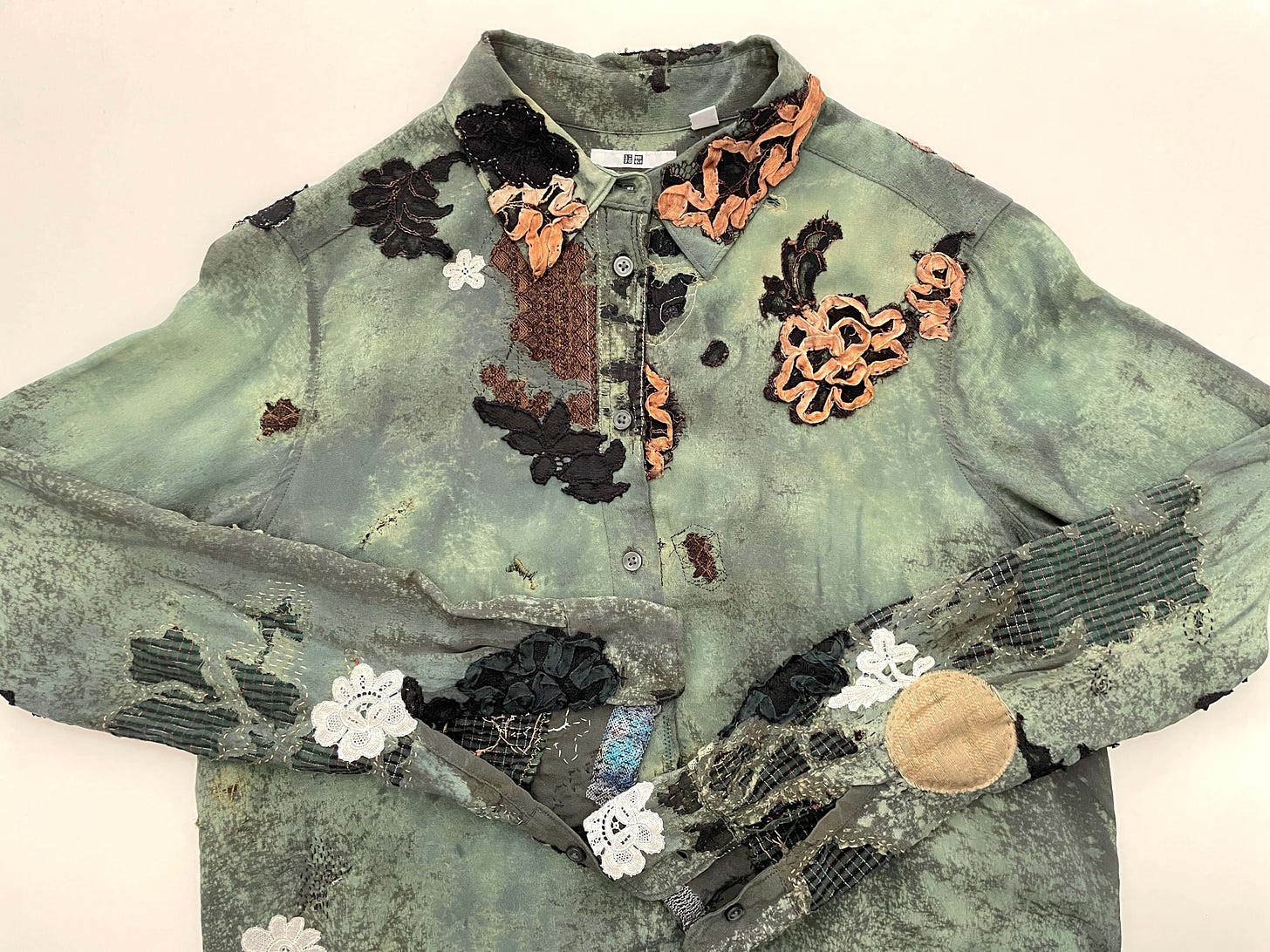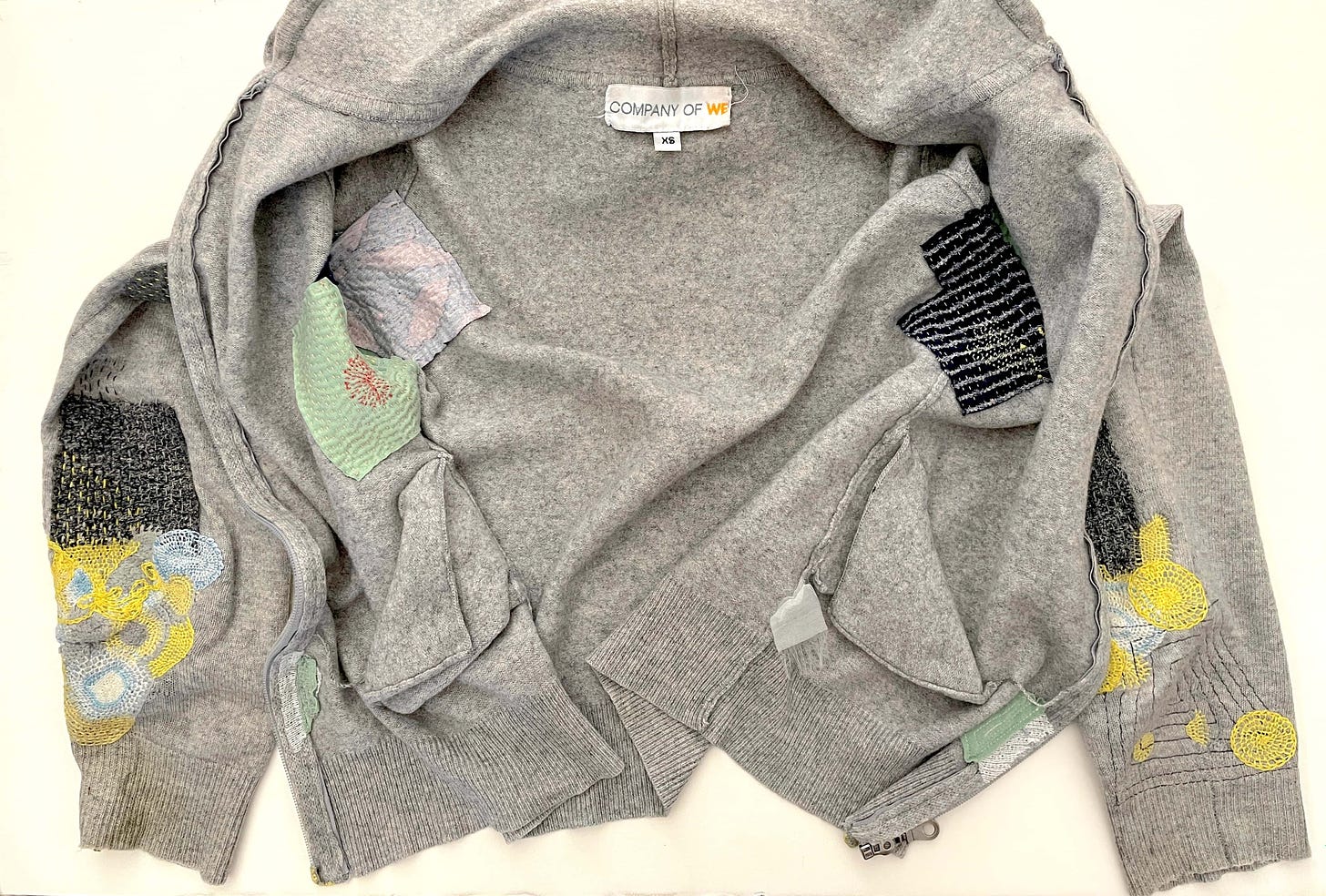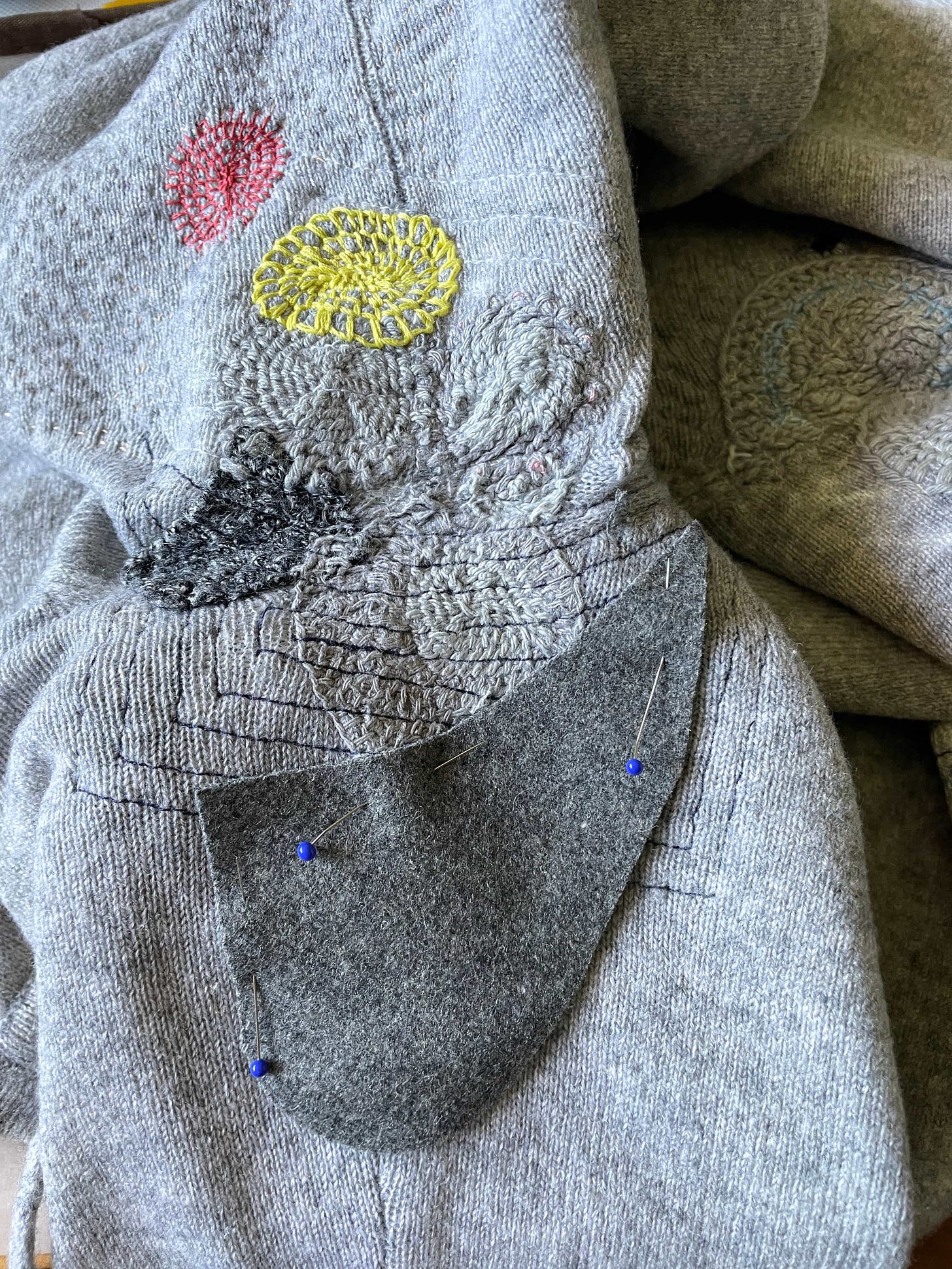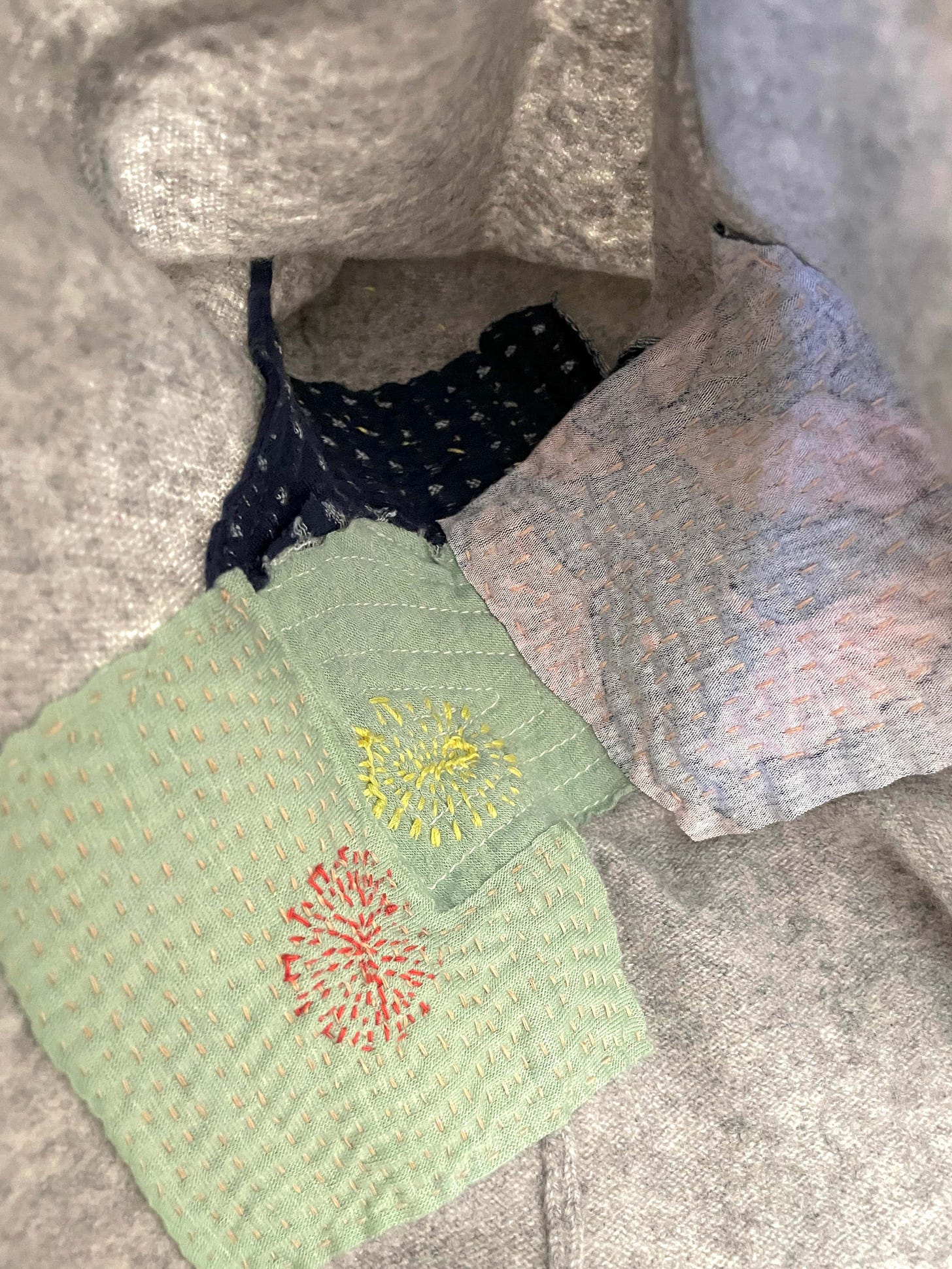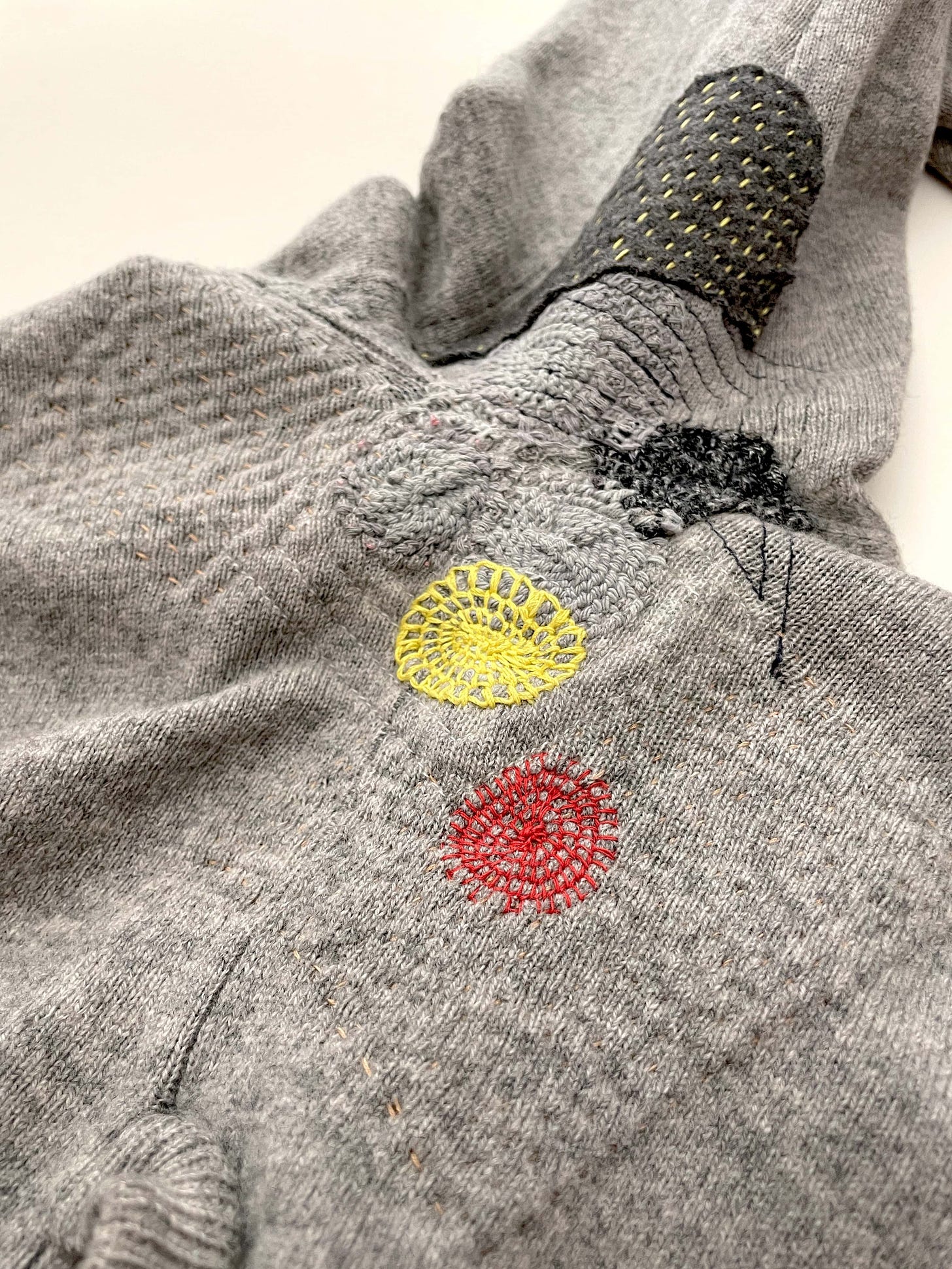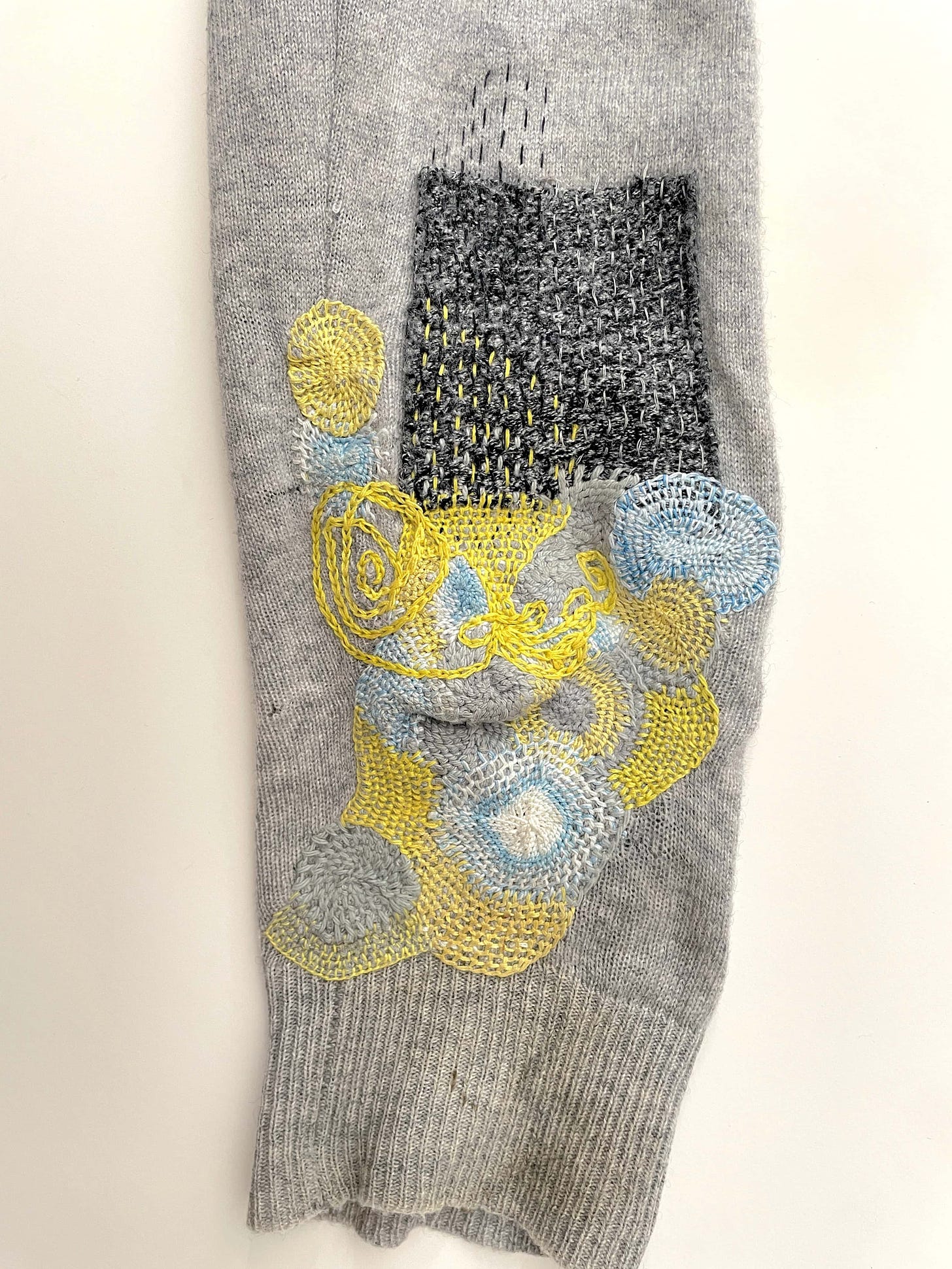Summer is officially here in California! School is out and the sun is mighty these days. Since the transition between spring and summer season, I’ve been catching up with several garment repair works. In this issue, I’d like to share updates for two garments I repeatedly mended year after year: the cashmere hooded sweater and the boro silk shirt. Fair warning: there are more than 30 pictures - this newsletter is likely to get truncated in your email inbox, so click “View Entire Message” or read it on Substack (website or app) to enjoy it to the fullest! It’s going to be worth it. Have fun!
I saw an Instagram reel the other day, where the content creator had stern words about people who flaunt their Amazon summer hauls.
“Show me your Amazon haul from last summer! Where are they now?!” she said.
Hauls of any kind is no news, especially for social media. Influencers who flaunt their hauls and their audience who entertain the hoard-and-dispose behavior are part of the current culture of overconsumption in the West. The much cited Ellen MacArthur Foundation, A new textiles economy: Redesigning fashion’s future (2017) mentions that in 2015, wear clothes 36% fewer times before discarding them compared to year 2000. On average, people wear clothes 7 times before tossing them away.
However, from my most recent conversations with fashion industry insiders this year, the figure gets bleaker since the rise of ultra fast fashion, which are made in combination of cheapest materials and disregard of human wellbeing. Now the average number trends downward - clothes get worn at most 3 to 5 times before they are thrown away.
When I repair clothes at the end of a season, I daydream about how much of the 85% of textile waste that the United States burns or landfills every year could’ve been saved if more people engage in the act of repair. When did garment mending or repairing become such a radical act?
Was it when we found out that it’s much easier and cheaper to replace an item instead? Or was that convenience the exact highway of ethical disregard we were always looking for in the first place?
The process of purchasing new things - whether it’s clothes or other products - is very psychological. The slow fashion industry is continuously working to bridge the gap of “desirability” between fast fashion / unethical brands and slow fashion ones. But how about the act of caring for your garments?
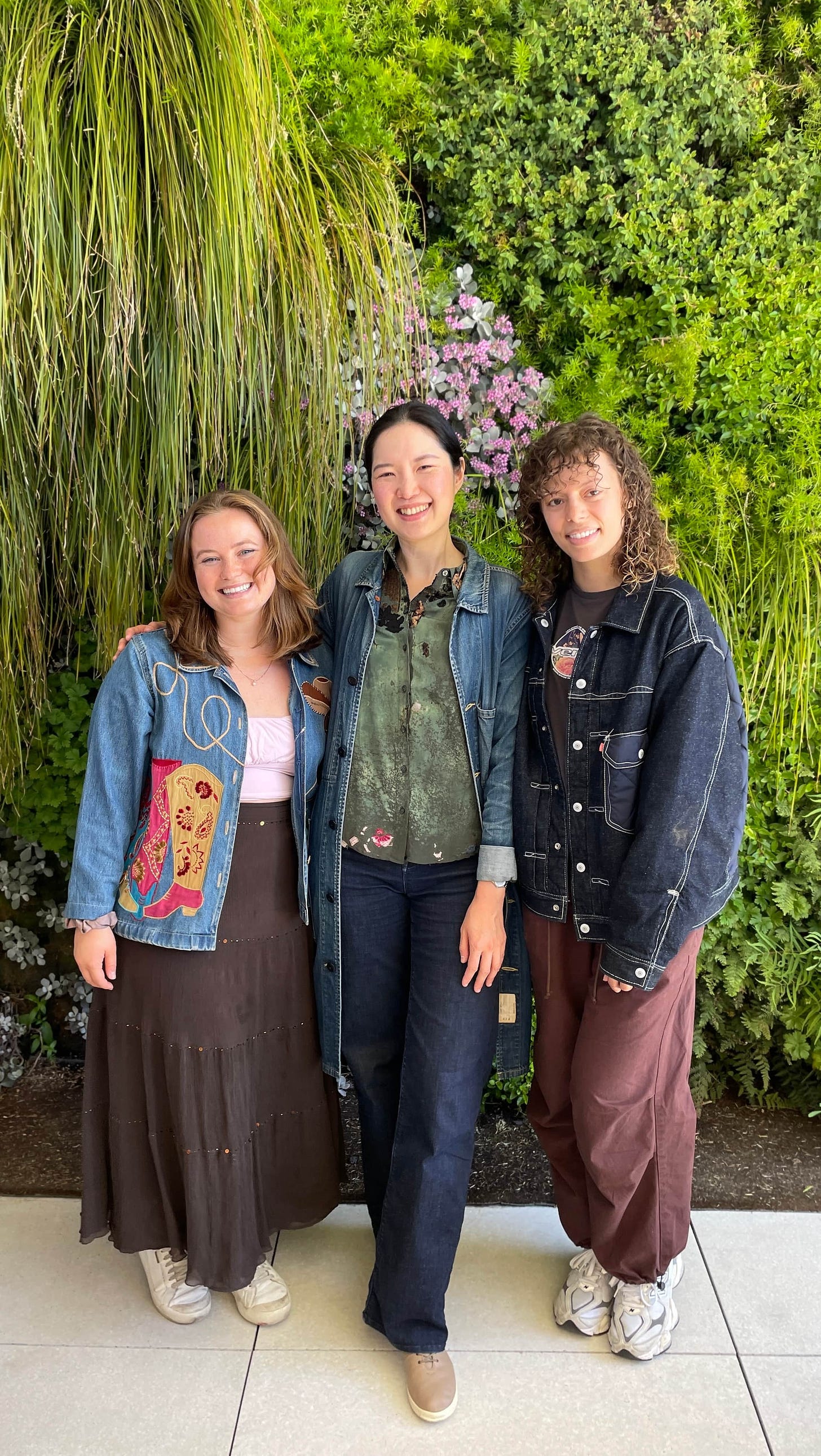
After repairing many of my garments and some of others (family and close friends), I come to the following observations. When I repair my own garments, it’s a very contemplative process, like a visual diary. It offers deep engagement with the garment I’m repairing, resulting in some kinds of healing - both literally and metaphorically. I find the act of repairing something I’m looking forward to, year after year. Time set aside to unpack, look inside, and renew. It’s a very satisfying, deeply psychological experience.
For most people I repair garments for, the experience is not unlike going to your trusted dry cleaner or tailor. It’s a service, and they get a slight dopamine hit when they receive the repaired garments. I don’t expect them to understand how much care and thoughtfulness go into repairing their garments. If anything, some of them are more concerned about how much time I set aside to repair their garments, nothing else. It’s a very transactional, cut-and-dry experience.
If more of us are involved in the matter of repairing, I believe we will do more than alleviating the overconsumption and waste problem. More of us will have opportunities to forge better relationships with their garments AND OURSELVES. We all carry trauma in our lives, and I find the act of repairing and mending a gateway to start healing my own traumas, little by little.
Just think about that. Would you agree? What’s your relationship with the garments in your life?
For the rest of the newsletter, let’s check out the most recent pictures of my cashmere hoodie and boro shirt. The first one is a hand-me-down garment I received in 2017, and the latter was originally a Uniqlo giveaway shirt I received in 2013. The shirt underwent a refashion in 2014 before it got accidentally damaged and tediously repaired in 2019.
To this day, I set aside some time once a year to inspect and repair them. The hoodie is my staple for stay-at-home wear, and the boro shirt is one of my favorites to wear to events, all-year round. Since I wear them both quite a lot, it’s only proper that I take good care of them, right?
I will show their most recent state, just after I repaired them earlier this month. I use the same set of techniques for visual mending repeatedly, so seeing the scenes expand and develop over the years have been wonderful, and I’m excited to share them with you! I hope seeing a visual documentation of these two visual mending projects inspire you to start your own, or to continue your existing project!
Cashmere Hooded Sweater
While this sweater is an unrivaled cozy staple in my wardrobe, it’s also quite fragile. It is a little bit too small, and the knit needs to stretch to accommodate my figure. Throughout the years, the most fragile areas are the armpits and sleeves (of course).
It’s amazing how much these repair / mending projects tell me about my tendencies in physical day-to-day activities. I’m right handed, so the right side is worn out quicker compared to the left. During the last repair, I added some squares of knit scraps underneath and did a series of running stitches that are mostly invisible on the outside.
On the outside, I made circular motifs with blanket stitches around small holes. Nowadays when I do this, I choose contrasting yarn colors so they are visible. When I first started visual mending in 2021, I chose bluish-gray wool yarns so they created textural interest without being too visible.
Moreover, the right sleeve is slightly elongated; a result of constant tugging and extensive repair to the weakened elbow area. Much of the sleeve repair was done in 2020 and 2021, however I also did a few series of free-flowing chain stitches just for fun in 2022.
And it looks like I need to do some more blanket stitches or running stitches over rectangular scraps again soon. Our Cat in Residence clawed my arm the other day, and I saw a hole forming. You can probably see it in the picture below, too!
In comparison, here are what the same sections look like on the left side. Only the armpit area is further repaired this year, the sleeve was last mended in 2022.
Keep reading with a 7-day free trial
Subscribe to Fafafoom Studio Newsletter to keep reading this post and get 7 days of free access to the full post archives.





